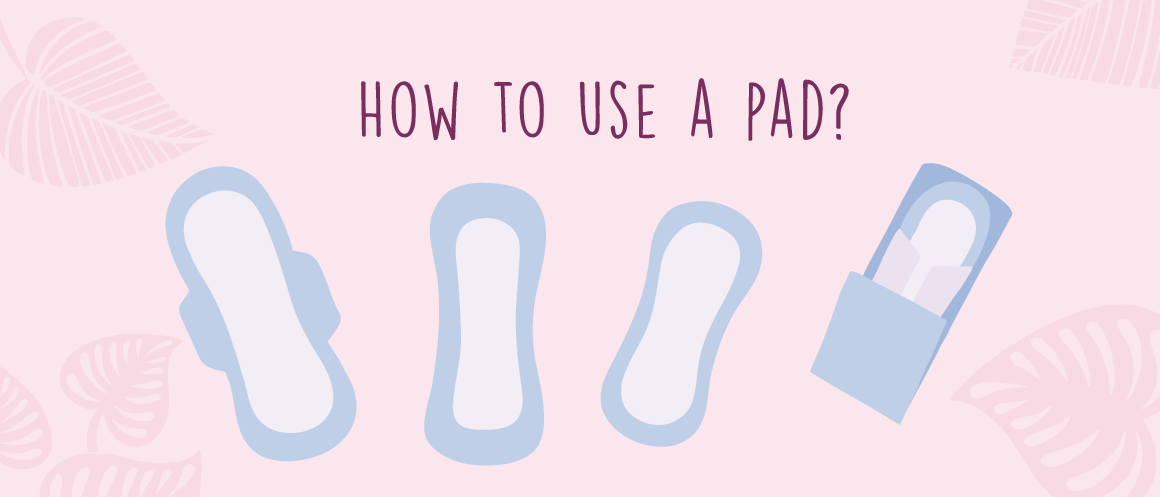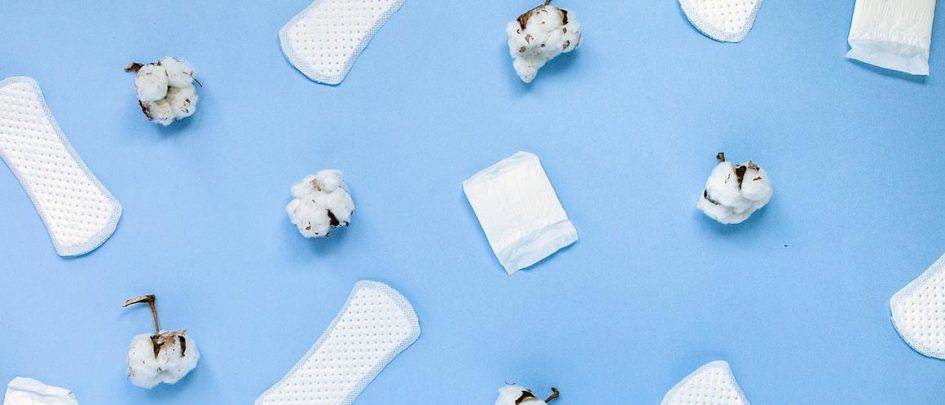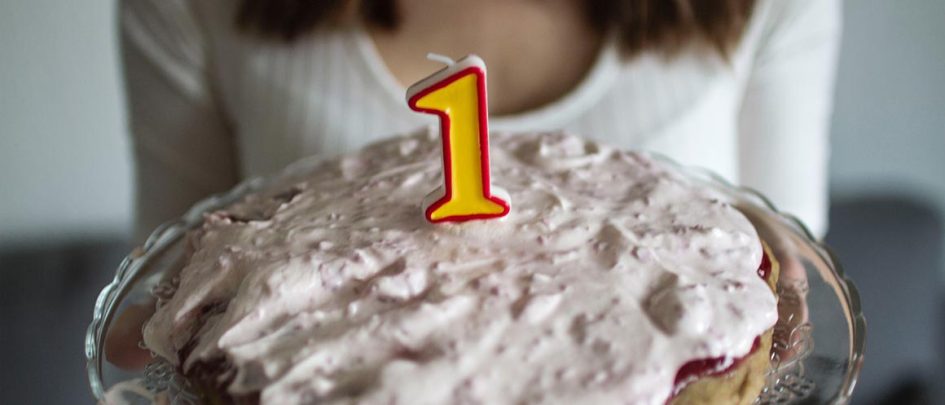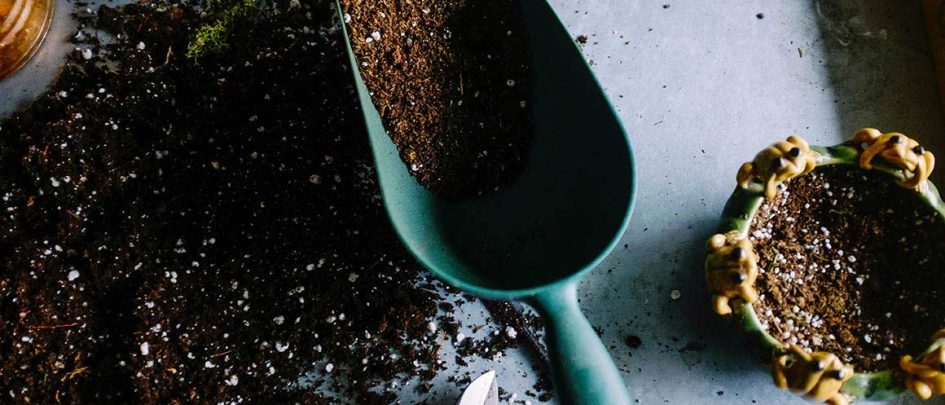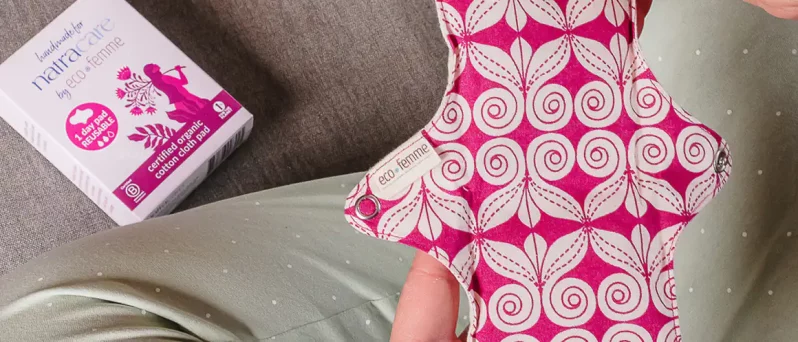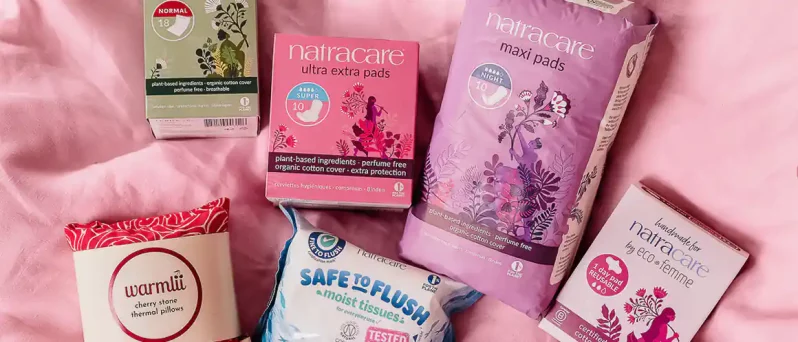Pads are a popular classic for managing periods. This is in part due to how easy they are to use and their comfort. For many across the globe, pads being externally worn is a bonus.
While a familiar favourite, if you’ve just started your period or never used pads before, it can be helpful to have a guide like this to help you through your first few uses!
Here’s a step-by-step guide on how to use a pad:
-
Choose your style of pad
First thing’s first; you need to choose a pad! There’s a huge variety of pads available, and it’s essential to select a pad that gives you the protection and support you need during your period.
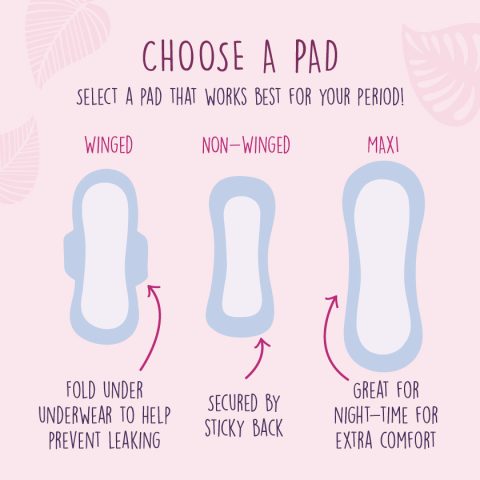
Pads come made with an absorbent material that’ll soak up the blood. The material used inside the pad varies with each brand. However, we recommend choosing a brand that uses natural materials. You’ll need to look for the absorbency that you need. Each pack of pads will display a droplet rating to show their absorbency – the more droplets, the more absorbent the pads are.
The pad itself can come in different shapes and sizes. For example, there are:
- Winged pads: Pads with extra pieces of fabric on the sides of the pad (these look like wings) that fold over your underwear and help hold the pad in place and prevent leaking.
- Non-winged pads: Pads without wings. These don’t wrap around your underwear and are only secured by the sticky backing.
- Maxi pads: These are thick and long cushioned pads, great for night time or for extra comfort.
It’s all about finding what works best for you and your body.
-
Wash your hands
It’s important to ensure your hands are clean before changing your period product, regardless of which kind you choose to use. Your hands will be next to your vulva and vagina, so freshly cleaned hands will help to avoid the spread of unwanted germs.
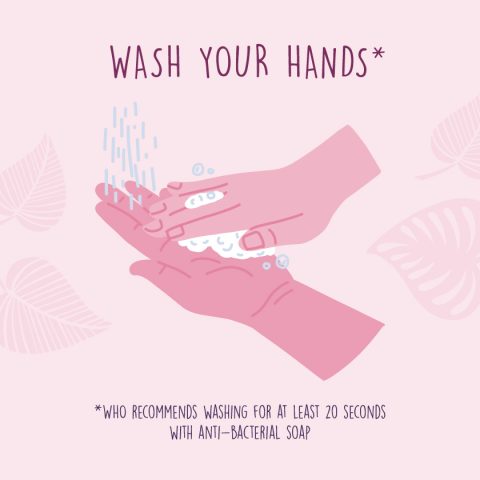
-
Get ready
Pull your bottoms and underwear down, sit on the toilet, and use toilet paper or a wet wipe to clean any blood from your vulva. Position the underwear you’re wearing to just below your knees, so you’ve got a clear view of the gusset – this is where the pad will go!
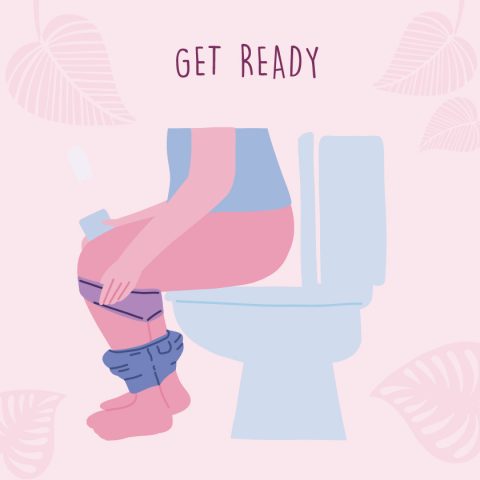
-
Open the pad
Grab the pad you’re using, remove the exterior packaging, and open it up. If it has one, remove the strip covering the back of the pad, which should feel slightly sticky.
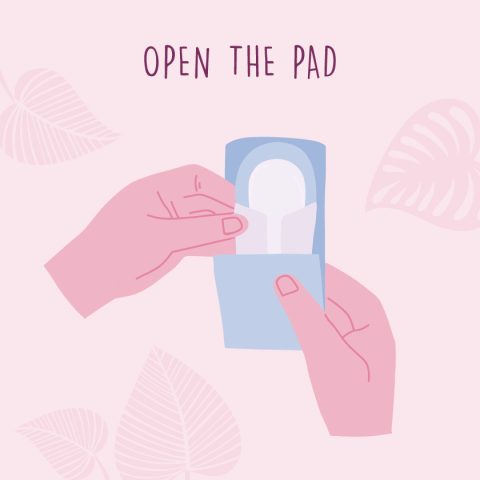
-
Stick the pad to your underwear
Place the pad onto your underwear, with the sticky side attached to the gusset and the absorbent side facing the ceiling (and what will be your vulva when you stand). Press the pad with your hands into the underwear to make sure it’s firmly in place.
If your pad has wings, remove the peel strip covering the wings. Fold the wings under and press them onto your underwear.
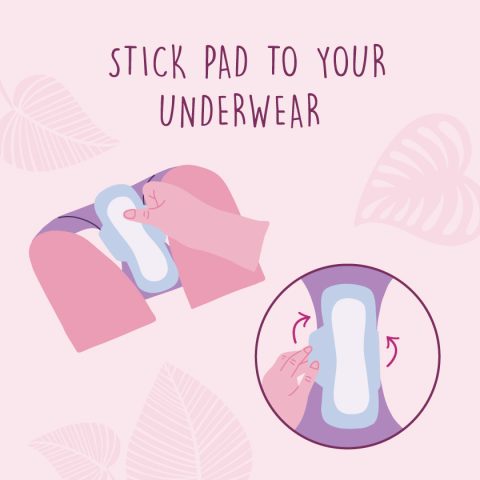
-
Almost good to go
Stand up and pull your underwear with the pad attached up. Use this as an opportunity to double check that the middle of the pad is in prime position – right underneath your vulva.
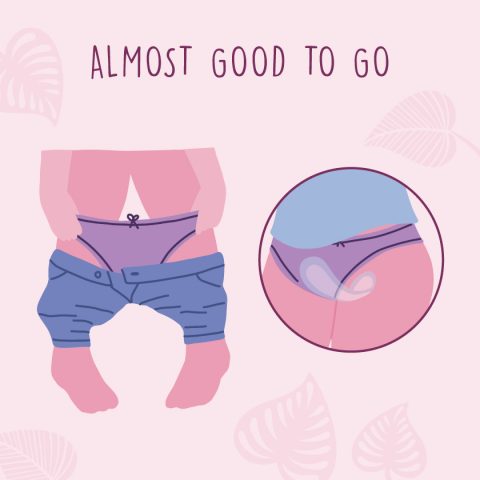
-
Wash and go!
As with any trip to the bathroom, remember to thoroughly wash your hands with soap and water before heading out and taking on the rest of your day.
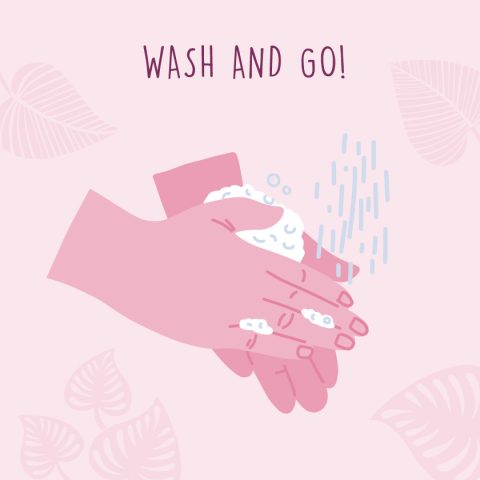
How to change your pad
It’s essential to maintain the best hygiene practices throughout your menstrual cycle, especially during your period. With this in mind, we recommend that you change your pad every 3-4 hours and more frequently if you have a heavier flow.
Here is a step-by-step guide on how to change your pad:
-
Ensure your hands are clean
We’ve been through this one already. Remember: lots of soap and water!
-
Remove wings, if applicable
If you’re using a pad with wings, unpeel the wings first from underneath your underwear. Then gently fold the wings back into the pad.
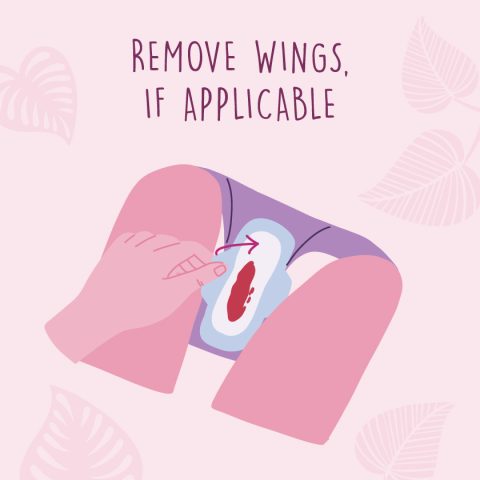
-
Roll the pad
Gently unpeel the top of the pad from your underwear, and then start rolling the pad into itself. This will help you keep your hands as clean as possible and make the pad smaller and easier to dispose of.
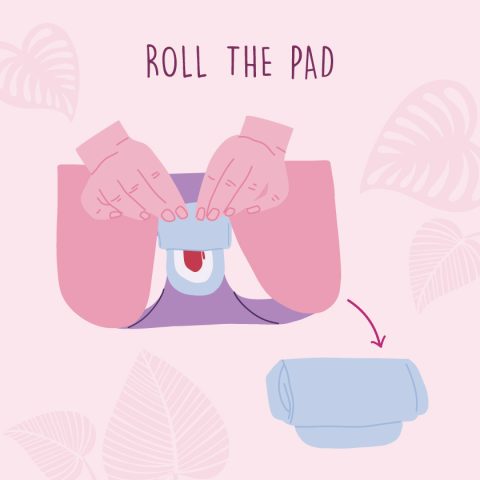
-
Wrap the pad
Once you’ve completely removed the pad from your underwear, wrap it using the pad wrapper from your fresh pad or toilet paper.
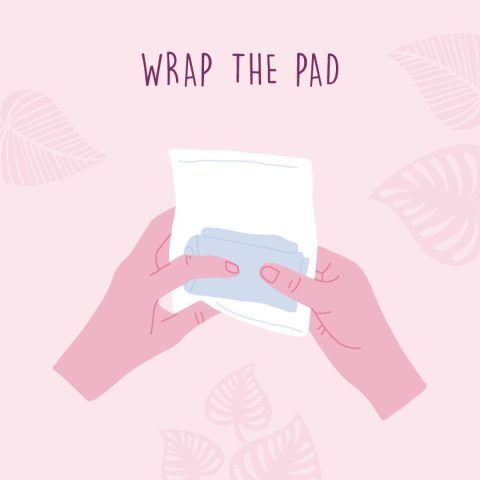
-
Dispose of your pad
If you’re using Natracare pads, you can compost them at home! If you’re using pads that aren’t compostable, you’ll need to dispose of them in your general bathroom waste. Regardless of the brand you choose and their sustainability credentials, always dispose of your period products in the most appropriate waste bin and never flush them down the toilet. Flushing is for the 3 P’s only – pee, paper, and poo!
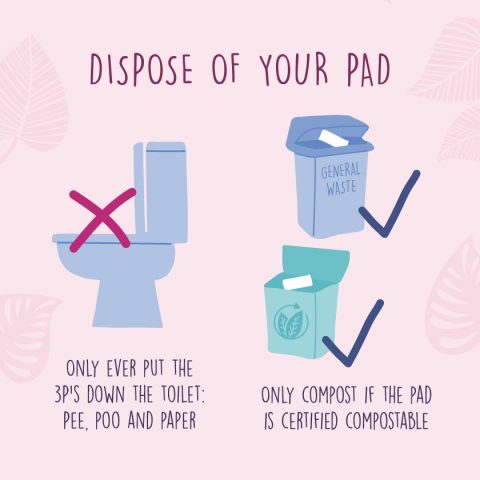
-
Bonus:
Since we’re unable to switch off our period during nighttime (what a treat that would be!), we’ve shared how to use a pad to help stop leaks at night.
Plastic in your pads?
Natracare pads are plastic free, biodegradable, and compostable.
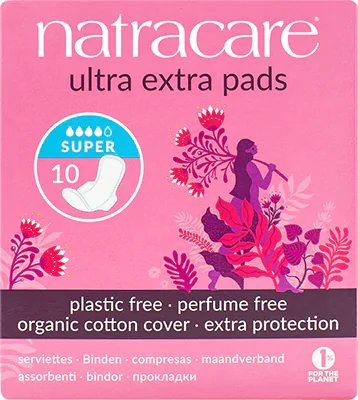
Make the switch today
Which pads are the best to use?
This really comes down to what’s best for you! It’s important you find pads with the right absorbency level for effective protection and ones that give you maximum comfort.
Choosing plastic free and compostable pads is another good choice if you have the means to. An average pack of conventional pads can contain up to the equivalent of five plastic shopping bags worth of plastic – period plastic pollution is a serious problem!
Whether wings or no wings is your preference, if you prefer a more cushioned or thin feel, and depending on your flow and absorbency needs, Natracare pads provide various compostable and plastic free options suitable for everyone.
Try to remember it may be a case of trial and error and figuring out what works best for you and your needs.
Can pads cause irritation?
We recommend that you change your pad every 3-4 hours to reduce the risk of irritation and leaks. However, sadly many conventional period brands still put artificial fragrances in their product, which might irritate your sensitive skin. The vulva is one of the most absorbent parts of the body, and these artificially fragranced period products can lead to itching, irritation and thrush. To avoid irritation, we recommend pads that are fragrance and plastic free.
Over to you. Do you love pads, or do you prefer other period products? Let us know below 👇
